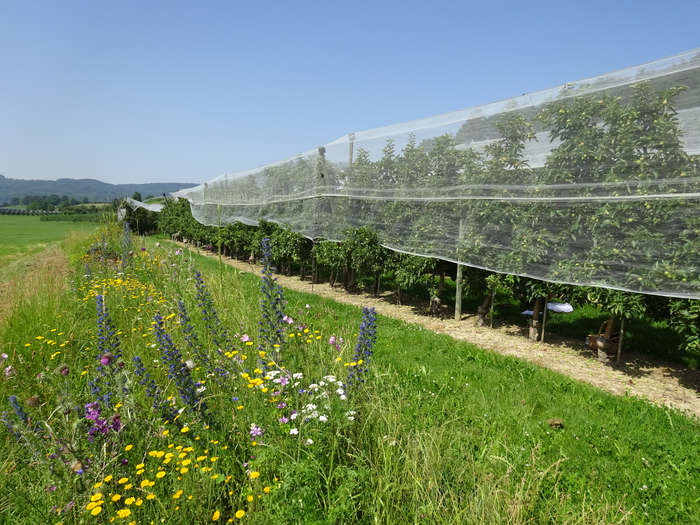The trees stretch out of sight,
acres of apples
pruned to perfection
over polished lawns –
pedicured petals that
bloom prematurely.
Barren crops
beholden to the
buzzing of the wild,
as strips of colour
reach out
across the grove.
Clusters of blossom
wrapped in silent prayer
to the fruitful touch
of their winged begetter.

This poem is inspired by recent research, which has found that hedges and perennial flower strips should be used together in order to boost wild bee populations in orchards.
Wild bees importantly pollinate both crop and wild plants. Yet, in intensive agricultural landscapes, wild bees are rare due to the resource limitations of nectar and pollen. To sustain wild bee populations, bee-attractive flowers need to be available during the entire growing season, but in mass-flowering crop monocultures like fruit-trees, flowers are usually only in bloom for a short time.
In this new study, researchers compared flower resources and wild bee populations across 18 apple orchards in the Lake Constance region of Germany (a major apple growing region) from 2018 to 2020. These orchards varied in features, containing combinations of perennial flower strips and hedges. Wild bee species were found to visit flowering hedges early in the season from March to June, whereas they visited perennial flower strips later in the season from June to August in the first year of planting, and from April onwards in subsequent years. Based on the findings of this study, the researchers recommend that farmers plant a network of perennial flower strips in combination with flower-rich hedges to support wild bees and with it their capacity to provide pollination to crops.
Discover more from The Poetry of Science
Subscribe to get the latest posts sent to your email.
Another to-the-point poem enlightening us about bees. But doesn’t that netting hamper the bees getting to the apple blossom? Or is it taken down at some point? Just wondering…
Thanks Moira. That is an excellent point! I think this was just for observation whilst they were doing the study.